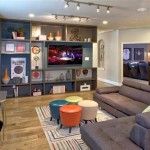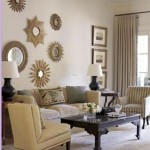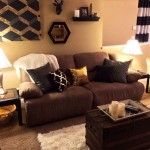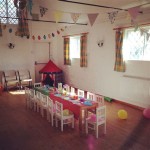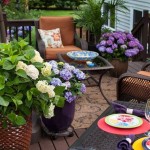Masculine Dining Room Decor: Defining Space and Character
The dining room, often considered the heart of the home, presents a unique opportunity to showcase personal style and create a space that is both functional and visually appealing. When crafting a masculine dining room, the focus shifts towards incorporating elements that exude strength, sophistication, and a sense of grounded presence. This involves carefully selecting materials, colors, furniture, and accessories that contribute to a robust and enduring aesthetic. The principles behind masculine design extend beyond simply avoiding traditionally feminine elements; it is about curating a space that reflects a deliberate and confident approach to interior decorating.
A successful masculine dining room should be simultaneously inviting and refined. It's a space where one can comfortably host formal dinners or enjoy casual meals, fostering connection and conversation. Achieving this balance requires strategic planning and attention to detail, considering every aspect of the room from the foundational elements to the finishing touches.
Material Selection: The Foundation of Masculine Design
The choice of materials plays a pivotal role in establishing a masculine aesthetic within the dining room. Natural, durable, and substantial materials are typically favored over delicate or highly ornamented options. The goal is to create a sense of permanence and understated luxury.
Wood, particularly dark and richly grained varieties, is a cornerstone of masculine design. A solid wood dining table, such as one crafted from oak, walnut, or mahogany, provides a strong and commanding presence. The table's finish can range from a deep, matte stain to a polished gloss, depending on the desired level of formality. The key is to select a finish that highlights the natural beauty of the wood grain and adds depth to the room's overall color palette.
Leather, often associated with luxury and durability, can be incorporated in various ways. Leather dining chairs, either fully upholstered or with leather accents, contribute a sense of warmth and comfort. The texture of leather, whether smooth or subtly distressed, adds tactile interest to the space. Alternatively, leather can be introduced through smaller accents, such as table runners, placemats, or decorative accessories.
Metal, in its raw or refined state, provides a contrasting element to the warmth of wood and leather. Metal accents can be incorporated through lighting fixtures, such as chandeliers or pendant lights, as well as through chair frames, table legs, and decorative objects. Finishes like brushed steel, wrought iron, and bronze lend a sense of industrial chic, while polished metals can add a touch of sophistication. The use of metal should be balanced to avoid creating a cold or sterile environment.
Stone, such as marble, granite, or slate, can be used to create a dramatic focal point in the dining room. A stone-topped buffet or console table can serve as a functional and visually striking element. The natural variations in color and texture found in stone add depth and character to the room. Furthermore, stone is a durable and easy-to-maintain material, making it a practical choice for a high-traffic area like the dining room.
Fabric choices also contribute to the overall masculine feel. Opt for durable, textured fabrics like wool, linen, or tweed for upholstery, drapery, and rugs. Avoid overly delicate or frilly fabrics. Dark or neutral colors, along with subtle patterns, are preferable. These fabrics offer a sense of comfort and visual weight, complementing the other materials in the room.
Color Palette: Establishing Mood and Depth
The color palette of a masculine dining room typically leans towards darker, more muted tones that evoke a sense of sophistication and grounding. While lighter colors can be incorporated as accents, the dominant hues should be chosen to create a sense of strength and visual depth.
Dark neutrals, such as charcoal gray, deep brown, navy blue, and forest green, are popular choices for walls, flooring, and large furniture pieces. These colors provide a solid foundation and allow for the introduction of brighter or more vibrant accents. When using darker colors, it is essential to ensure that the room has adequate lighting to prevent it from feeling too gloomy. Natural light is ideal, but artificial lighting can also be used strategically to brighten the space and highlight key features.
Earthy tones, such as terracotta, ochre, and rust, can be used to add warmth and create a connection to the natural world. These colors work well as accent colors in artwork, textiles, and decorative accessories. They complement the darker neutrals and prevent the room from feeling too stark or sterile.
Metallic accents, such as gold, silver, and bronze, can be used to add a touch of luxury and sophistication. These metallic tones can be incorporated through lighting fixtures, picture frames, mirrors, and decorative objects. The key is to use metallic accents sparingly to avoid creating an overly opulent or ostentatious look. A few well-placed metallic elements can add a subtle touch of glamour and elevate the overall design.
When selecting a color palette, consider the size and shape of the dining room. Lighter colors can make a small room feel more spacious, while darker colors can create a more intimate and cozy atmosphere. It is also important to consider the existing architectural features of the room, such as the flooring, trim, and ceiling height, when choosing colors.
Accent colors can be used to add personality and visual interest to the dining room. Red, orange, yellow, and purple can be used sparingly to create focal points and add pops of color. However, it is important to use these colors judiciously to avoid creating a jarring or overwhelming effect. A good approach is to use accent colors in small doses, such as in artwork, cushions, or decorative accessories.
Furniture and Decor: Achieving a Balanced and Functional Space
The selection and arrangement of furniture are crucial in creating a functional and aesthetically pleasing masculine dining room. The furniture should be both durable and comfortable, reflecting a sense of understated elegance.
A substantial dining table is the centerpiece of the room. Choose a table that is appropriately sized for the space and can comfortably accommodate the desired number of guests. Rectangular tables are a classic choice, but round or oval tables can also work well in certain spaces. The table should be made from high-quality materials, such as solid wood or metal and wood combination, and should be finished to a high standard.
Dining chairs should be chosen to complement the table and the overall design of the room. Leather or upholstered chairs provide comfort and visual interest. The chairs should be sturdy and well-constructed, and the upholstery fabric should be durable and easy to clean. Consider chairs with clean lines and minimal ornamentation.
A buffet or console table can provide additional storage and serving space. Choose a piece that complements the dining table and chairs. A buffet with drawers and cabinets can be used to store dishes, linens, and silverware. The top of the buffet can be used to display decorative objects or to serve food and drinks.
Lighting plays a crucial role in setting the mood and creating a functional dining space. A chandelier or pendant light suspended above the dining table provides ambient lighting and serves as a focal point. Sconces or recessed lighting can be used to provide additional illumination and highlight architectural features. Dimmers allow for adjusting the lighting to create different moods.
Artwork and accessories can add personality and visual interest to the dining room. Choose pieces that reflect personal taste and complement the overall design. Consider framed prints, paintings, sculptures, and decorative objects. Avoid overly cluttered or fussy displays. A few carefully chosen pieces can have a greater impact than a large collection of random items.
Rugs can be used to define the dining area and add warmth and texture to the room. Choose a rug that is appropriately sized for the space and complements the furniture and color palette. A rug should be large enough to accommodate all the chairs, even when they are pulled out from the table. Natural fiber rugs, such as wool or jute, are a good choice for a masculine dining room.
Window treatments can be used to control light and privacy. Choose simple and understated window treatments, such as blinds, shades, or curtains. Avoid overly frilly or ornate designs. Darker colors can be used to block out light and create a more intimate atmosphere, while lighter colors can allow more light to filter through.
Plants can add a touch of life and freshness to the dining room. Choose plants that are easy to care for and complement the overall design. Consider incorporating potted plants, succulents, or air plants. Plants can be placed on the dining table, buffet, or windowsill.

Elegant And Masculine Dining Room Living Design Decor

34 Masculine Dining Space Furniture Ideas To Rock Digsdigs

Blog Archive 43 Stylish And Dramatic Masculine Dining Areas Fine Room Traditional Rooms Style

Masculine Dining Room Interior Design Ideas

Masculine Dining Rooms Furniturepick Com Blog

Masculine Design Beyond The Man Cave Centsational Style Dining Room Inspiration Rectangular Table House Interior

Before After Masculine Interior Design And Décor Decorilla

16 Fascinating Masculine Dining Room Designs That You Need To See Today

38 Elegant Masculine Dining Room Designs In Various Styles Digsdigs

Masculine Dinner Party Ideas Home With Holliday
